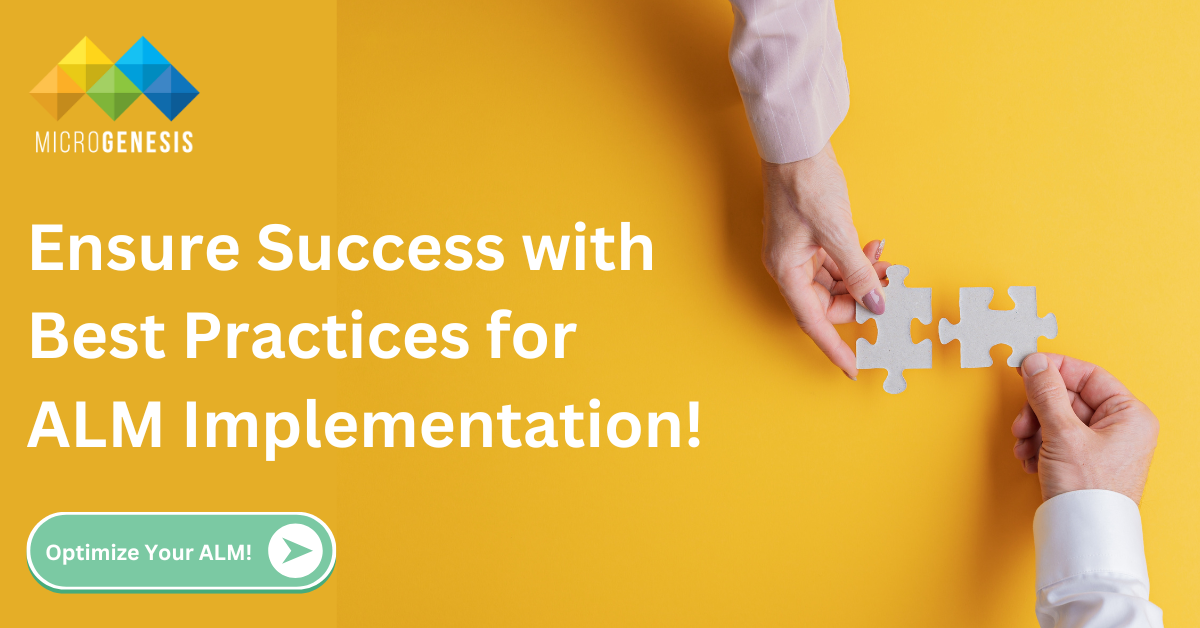A mid-sized tech company, eager to improve its software delivery, adopted an ALM tool. However, after six months, they realised the software delivery timelines were taking twice as long as before!
What could have been missing?
Improper ALM implementation!
Research has shown that nearly 70% of such undertakings do not deliver what they promise due to poor planning and execution. It is essential to get both aspects correct when implementing any system or software package, not just selecting the right one.
Keep reading to find out more about some tips that will help make your ALM tool implementation a success.
Planning for ALM Tool Implementation: Setting Objectives and Requirements
Think about this phase as being foundational – if you don’t lay down strong foundations everything else might crumble around them! Start by understanding what exactly you want to achieve using your chosen application lifecycle management tool (ALM).
Once you know your goals, gather input from all relevant teams to define your needs. This step is crucial for ensuring that the project implementation of ALM meets your specific business objectives.
Rollout Strategy: Phased Approach vs. Big Bang Implementation
Choosing between a phased approach and a big-bang implementation is critical.
| Aspect | Phased Approach | Big Bang Implementation |
| Implementation | In stages | All at once |
| Adaptation | Gradual adaptation | Sudden adaptation |
| Risk | Reduced risk of disruption | Higher risks |
| Stress Level | Less stressful | More stressful |
| Flexibility | Opportunities to fix issues | Less flexible |
Source: TechTarget
Stakeholder Engagement and Communication: Ensuring Buy-in and Alignment
Reiterative communication is important in making sure that all people comprehend the benefits of ALM as well as the changes it brings. When stakeholders participate in the planning process and decision-making, it creates ownership at every level.
It works by dealing with concerns, capturing feedback, and building confidence. Effective stakeholder engagement greatly facilitates the project implementation of ALM.
Training and Onboarding: Equipping Users with the Necessary Skills
Invest in extensive training programs in ALM management tools, including practical sessions and ongoing support. This step not only reduces resistance but also improves efficiency.
With good training, a team can operate the system effectively thus simplifying ALM maintenance. Do not under-invest when it comes to preparing your staff for success in future through adequate training.
Data Migration: Transferring Data from Legacy Systems to ALM Tools
Data migration is one of the most challenging parts of ALM tool implementation. Transferring data from legacy systems to the new ALM tool requires planning and execution. Ensure data integrity and consistency by conducting thorough testing and validation. This step is crucial to avoid data loss or corruption.
Proper data migration ensures that the project implementation of ALM is built on a solid foundation.
Integration with Existing Workflows and Tools: Seamless Transition
The new system ought not to interfere but rather improve upon your current processes. Ensure that the ALM tool is compatible with other software used by your team. Aim for a seamless transition that adds value to your existing workflows, making the change as smooth as possible for everyone involved.
Proper integration supports efficient ALM maintenance and helps your team adapt to the new tool without unnecessary friction.
Common Challenges in ALM Tool Implementation Projects
Implementing an ALM tool can be tough. Here are the main challenges and how to tackle them:
- Resistance to Change: Teams might resist new tools. Get them involved early and show the benefits clearly.
- Data Migration Issues: Moving data from old systems can be tricky. Plan well and test thoroughly to ensure data stays accurate.
- Integration Problems: Ensuring the new tool fits with existing workflows is hard. Choose tools that integrate well with what you already use.
- Insufficient Training: Without proper training, users will struggle. Provide comprehensive training to ensure everyone knows how to use the tool.
- Lack of Stakeholder Buy-In: Without stakeholder support, the project can fail. Engage them early to get their support and input.
If you want to know more about implementing ALM software solutions in detail, check out our complete guide here.
Pitfalls to Avoid: Lessons Learned from Failed Implementations
To achieve success when implementing projects there need to be clear goals set from onset. Avoiding common pitfalls is crucial for successful project implementation of ALM. A real example from 2023 highlights this. A global transport systems company faced big delays in their Dynamics 365 implementation because they didn’t have a good ALM strategy.
At the start, they used unmanaged solutions, which led to deployment issues and a 12-week delay in their minimum viable product (MVP). Microsoft Support found that the lack of ALM practices caused poor code quality and not enough testing. This shows how important a solid ALM strategy is to avoid costly problems.
Realising Tangible Benefits: Improvements in Efficiency, Collaboration, and Quality
When done right, an ALM tool can bring real benefits. Here’s what you can achieve:
- Enhanced Efficiency: Streamlined processes save time and reduce costs.
- Improved Collaboration: Centralised tools help teams communicate and work together better.
- Higher Quality: Better tracking and management lead to fewer mistakes and higher-quality results.
- Increased Transparency: Everyone can see project status in real time, improving decision-making.
- Faster Delivery: Clear processes and optimised workflows help meet deadlines more consistently.
Conclusion
An ALM tool can greatly improve your projects if implemented correctly. Address the common challenges and focus on the real benefits. If you’re uncertain about choosing the right ALM tool for your organization, contact MicroGenesis for a demo. We’ll assist you in selecting and implementing the ideal solution for your requirements, leveraging enterprise digital transformation consulting to optimize your processes.




